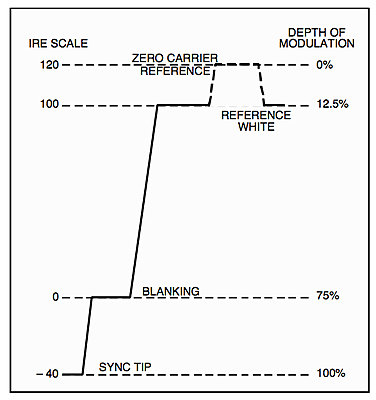
|
|
|
|||||||||
|
|
Thread Tools | Search this Thread |
|
|
#1 |
|
Regular Crew
Join Date: Apr 2004
Location: Dayton, Ohio
Posts: 43
|
Video Levels in a scope
Quick question. I have been told that it's not critical for a small elements of a video signal to exceed 100% when broadcast. For instance, let's say that the shot is of a small town. Everything is within video safe levels except for a few small bits of the skyline. Do I have to adjust the whole image for the skyline or can I safely leave a few "hot" spikes in the video?
I remember an engineer saying that it's like an 80/20 or 90/10 rule of thumb. Also, is it the inaccurate or "crushing" black levels that cause audio noise when broadcast. Along with any advise...could you recommend any links on articles. Thanks.
__________________
-Mike |
|
|
|
|
|
#2 |
|
Major Player
Join Date: Dec 2003
Location: Albany NY
Posts: 311
|
I believe it is the "Hot" whites that cause the noise. You see (hear) it most on CG's. Don't exceed 100 IRE.
|
|
|
|
|
|
#3 |
|
Inner Circle
Join Date: Jun 2003
Location: Toronto, Canada
Posts: 4,750
|
1- You could clip the luma signal at 100 IRE.
2- The maximum composite allowed signal depends from broadcaster to broadcaster... NTSC spec allows for up to 120 IRE, although you may want to clip at 115 IRE. This is because old sets aren't good at discriminating between video and audio at that high a level. (This is the gist of Charles Poynton's book.) ~120 IRE is where video bleeds into audio. 3- In a composite signal, the sync signals are at -40 IRE. If your picture has composite IRE values that are too low (i.e. <20 IRE), then receivers will confuse picture with sync signals and the picture won't be stable. 4- That's what I can figure out anyways. There can be lots of conflicting and bad information on the internet. Sometimes it is best to get the broadcasters' specs, since these vary from broadcaster to broadcaster! |
|
|
|
|
|
#4 |
|
Regular Crew
Join Date: Apr 2004
Location: Dayton, Ohio
Posts: 43
|
Thanks for the info. I hope everyone will put their two cents in on this subject.
I know for a fact that I've submitted programs to be broadcast with small parts of the image over 100 IRE. While watching the programs, I have never heard or seen any problems. How is this possible? 1- I was watching it on a more recently manufactured TV set. That also means that I wasn't over at Grandma's house. 2- Master Control adjusted it either during ingest or playback. But with only a few shots out of the safe area (and barely), would they? How do I stay safe... In Photoshop and After Effects I can adjust the levels (video, colors, and photos) to an input of 15 and an output of 235-making it "video safe". Obviously, I need to pay closer attention (field monitor/scope) to what is being shot and how it's being ingested...my color bars. What are some quick ways to accomplish video level correction in Avid and FCP like in Photoshop/After Effects as stated above? Thanks for the great tips...I always learn so much here on this forum!
__________________
-Mike |
|
|
|
|
|
#5 |
|
Wrangler
|
Mike this will become less of a problem as digital TV transmission becomes the norm. But as long as NTSC is still in use, you should do the engineers a favor and keep everything at or below 100 IRE. And here is why...
When the signal is broadcast, the video portion is Amplitude Modulated just like the good old AM radio although it's not quite the same because it's vestigial sideband transmission (but that's for another day). When you modulate a carrier wave to 100%, the envelope goes to 0 amplitude at the bottom. If it attempts to go beyond 0 amplitude (>100% modulation), distortion results which produces harmonic signals whose frequencies could land on top of and interfere with another station's broadcast signal. If you're interfering with someone's signal, you can bet the FCC isn't going to be happy with you. This is the reason why 100IRE is supposed to be the maximum. It corresponds to the 12.5% minimum reference white level. This leaves a little cushion so you could have a few brief peaks in excess of 100IRE. Many NLE's have a broadcast safe filter that you can throw onto the entire sequence as the last step before rendering. I would suggest you use it if you have it on material destined for NTSC broadcast. -gb- 
|
|
|
|
| ||||||
|
||||||
|
|